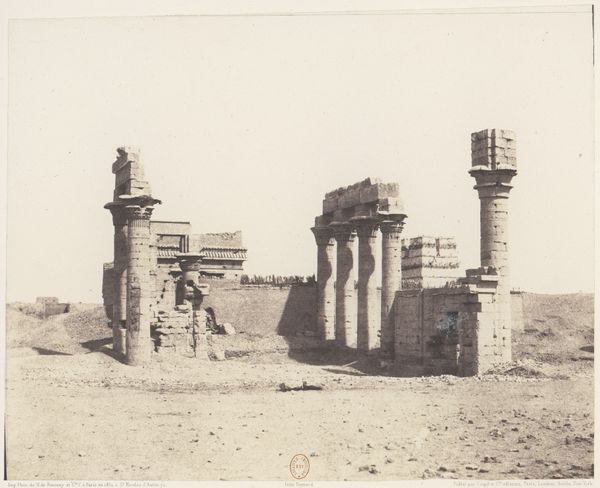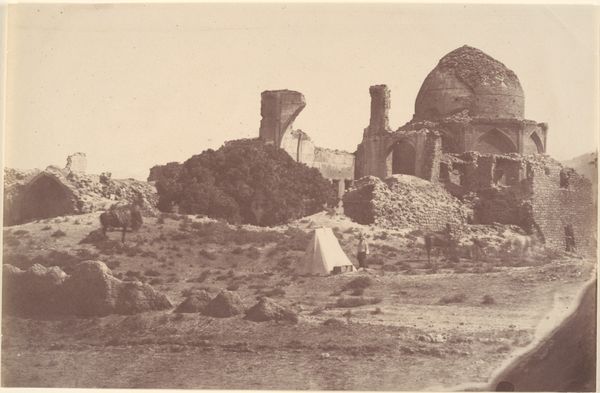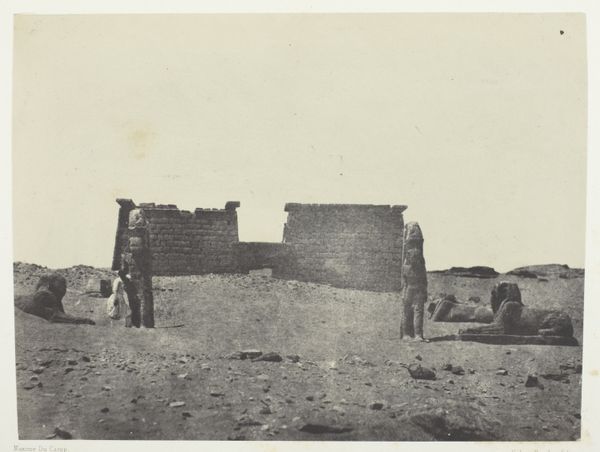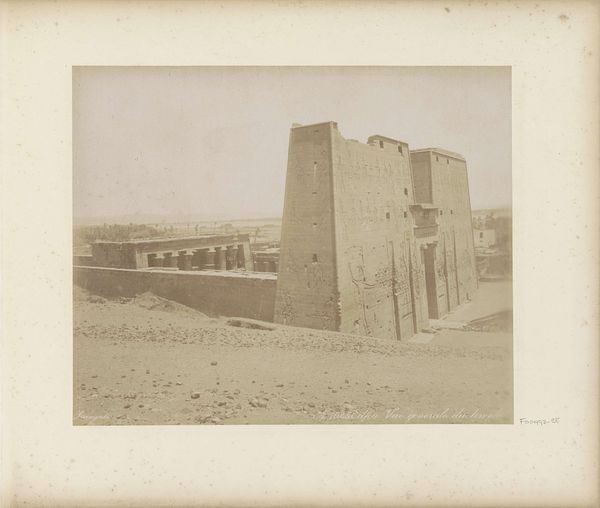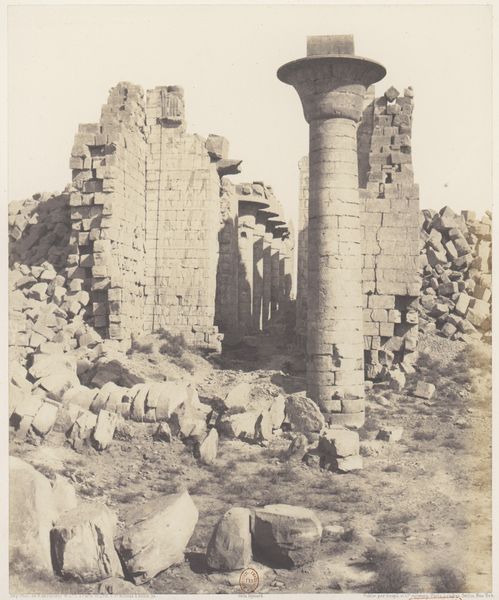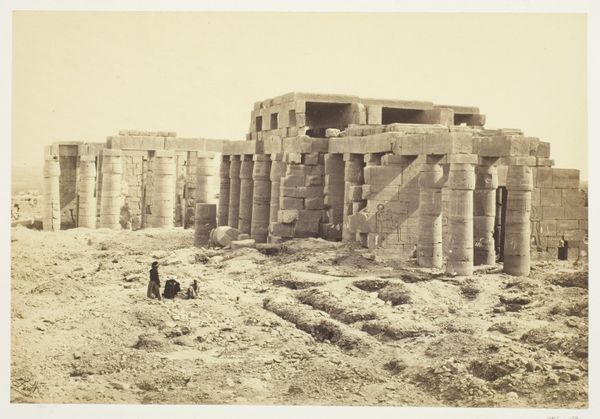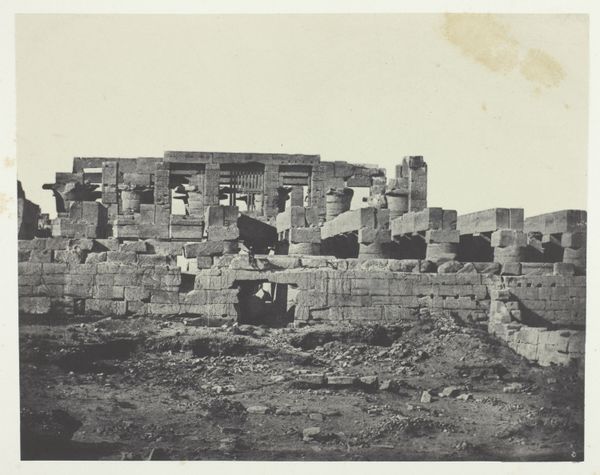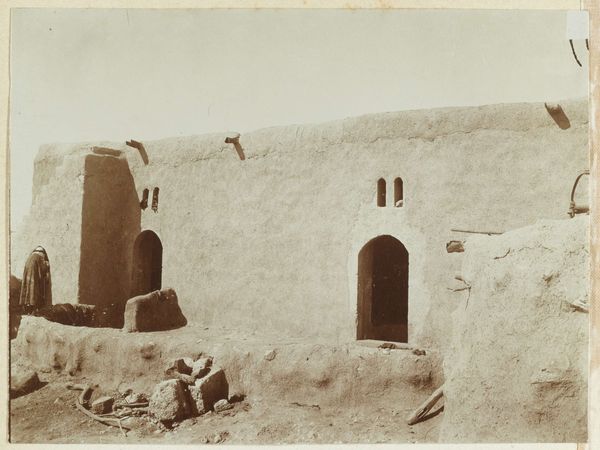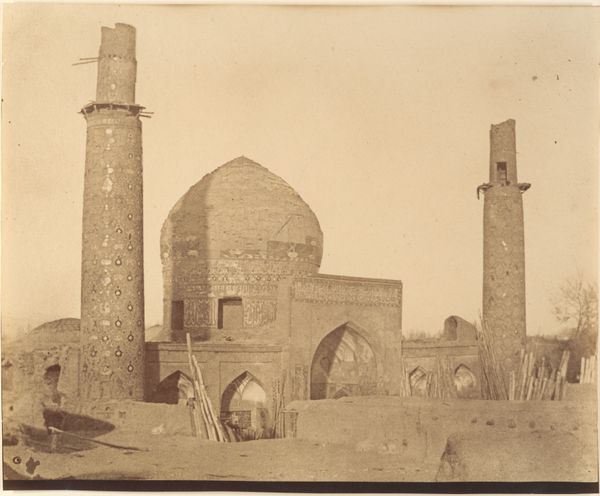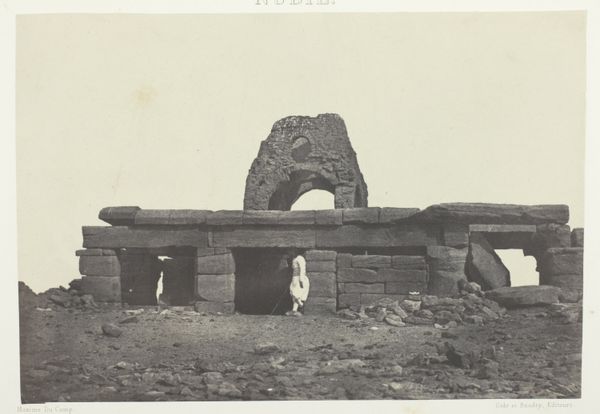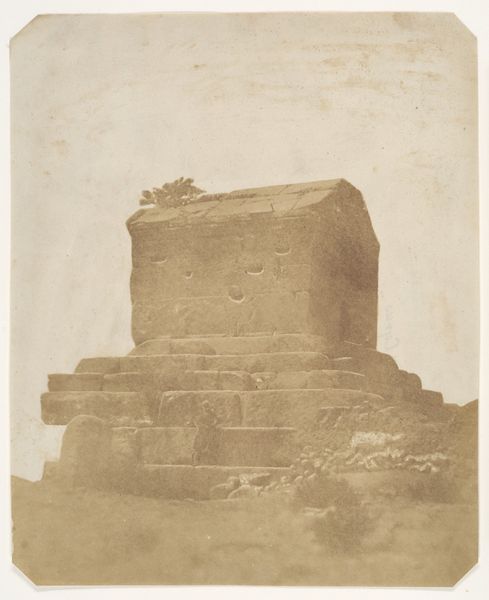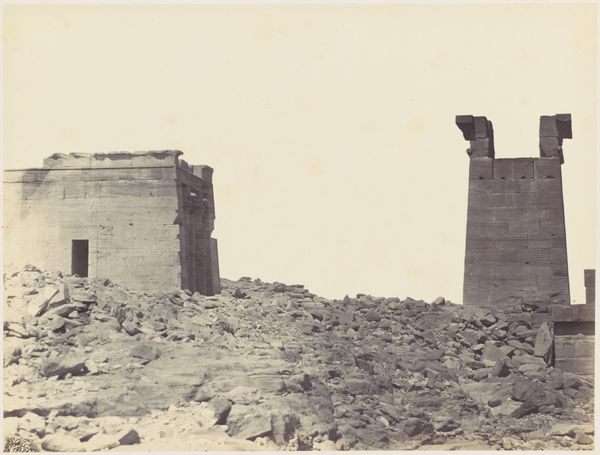![[Ruins of Tus, Khorasan] by Luigi Pesce](/_next/image?url=https%3A%2F%2Fd2w8kbdekdi1gv.cloudfront.net%2FeyJidWNrZXQiOiAiYXJ0ZXJhLWltYWdlcy1idWNrZXQiLCAia2V5IjogImFydHdvcmtzLzk1MDQyMGQwLTMzYWEtNDBiOC04ZTIyLTZiNzdjNDZlNWJhOC85NTA0MjBkMC0zM2FhLTQwYjgtOGUyMi02Yjc3YzQ2ZTViYThfZnVsbC5qcGciLCAiZWRpdHMiOiB7InJlc2l6ZSI6IHsid2lkdGgiOiAxOTIwLCAiaGVpZ2h0IjogMTkyMCwgImZpdCI6ICJpbnNpZGUifX19&w=3840&q=75)
print, photography, albumen-print
# print
#
landscape
#
photography
#
ancient-mediterranean
#
orientalism
#
albumen-print
Copyright: Public Domain
Curator: Immediately, I sense a somber silence in this monochromatic landscape. The photograph almost feels excavated, ancient in its emotional weight. Editor: This albumen print captures the "Ruins of Tus, Khorasan," sometime between 1840 and 1869, taken by the enigmatic Luigi Pesce. Notice how the albumen print process itself contributes to this feeling of antiquity; it was at the cutting edge, then it created these records of antiquity. Curator: It's breathtaking! I keep thinking of a forgotten outpost against the relentless sands of time. It’s so stark. Look at how the light carves into the ruined structure. Almost biblical. Editor: Consider how this fits within the orientalist movement of the period, appropriating cultural aesthetics. Photography offered a new "objective" means of documenting the "exotic" for a European audience, with implications about labor and colonialism. Curator: I wonder about the human hands involved, both those who built this place, brick by brick, and those who carefully processed the print itself, layer by layer. You can see the fingerprints in the tonal depth, especially in the subtle gradations of the earth and sky. It gives it a strange, dreamlike quality. Editor: Albumen prints like this, while seemingly archival, were intensely involved processes. We see in Pesce's landscape, not merely ancient stones, but the fruits of industrial chemistry that reframe even crumbling infrastructure for distribution. Curator: Yes, these aren’t just ruins, are they? It’s really about seeing through a technological lens – through material and manufacture as much as through literal space. What does survival really look like through time? Editor: It forces a kind of reflexivity, doesn't it? This material existence out of place, through history, documented only through material processes. A cycle. Curator: Ultimately it comes down to touch and time - on sand, on stone, and paper. Thank you for untangling that for me.
Comments
No comments
Be the first to comment and join the conversation on the ultimate creative platform.
